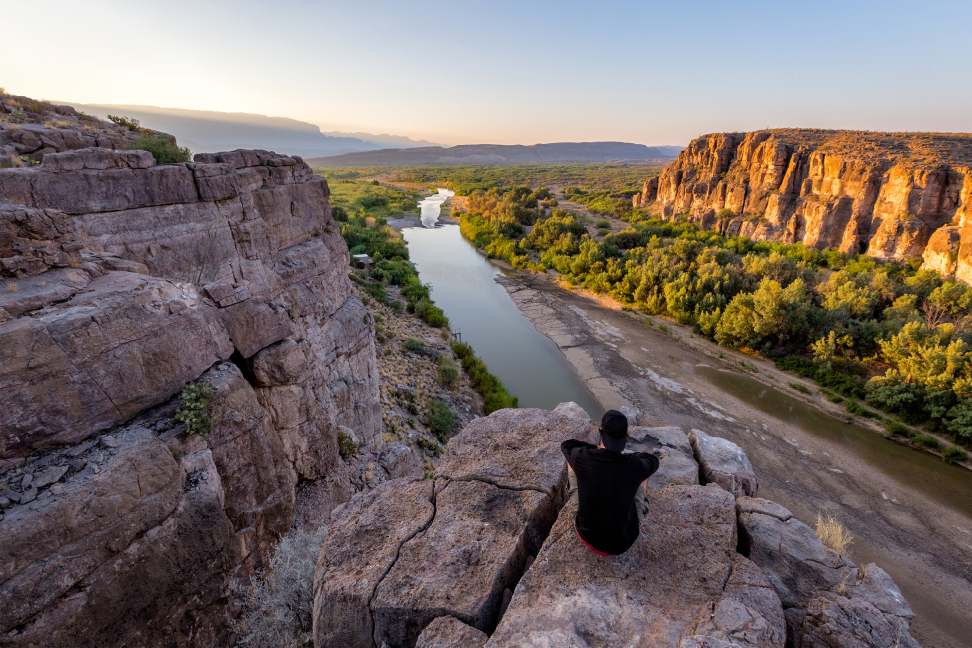Big Bend National Park, nestled in the heart of the Chihuahuan Desert along the US-Mexico border, is a photographer’s paradise. From towering mountains and dramatic canyons to vast desert plains and the meandering Rio Grande, the park presents a diverse landscape begging to be captured through the lens. Whether you’re an amateur shutterbug or a seasoned professional, Big Bend offers photographic opportunities unlike any other.
Capturing the Grandeur:
- Panoramic vistas: Stand on South Rim overlooking the vastness of the Chihuahuan Desert, and you’ll understand why Big Bend is named for the sharp bend in the Rio Grande. Capture the sprawling landscape bathed in golden light at sunrise or the dramatic play of shadows at sunset.
- Majestic Chisos Mountains: Climb the South Rim Trail or Lost Mine Trail to breathtaking viewpoints. Photograph the iconic Boot Spring framed by pine trees, or capture the dramatic rock formations like The Window and Balanced Rock.
- Canyons carved by time: Hike into the depths of Santa Elena Canyon, the deepest in Texas, and photograph its towering walls bathed in the cool, green light filtering through the narrow opening. Capture the unique sculpted formations in Boquillas Canyon, accessible only by boat or guided tour.
Finding Hidden Gems:
- Desert blooms: Spring transforms the desert with vibrant wildflowers. Capture fields of bluebonnets blanketing the plains or colorful cacti bursting with blooms against the rugged backdrop.
- Starry nights: Big Bend boasts some of the darkest skies in the continental US. Photograph the Milky Way arching across the heavens, or capture constellations sparkling with unparalleled clarity. Balanced Rock under the Milky Way is a classic Big Bend shot.
- Intimate details: Look beyond the grand vistas and focus on the intricate details. Photograph the intricate patterns of desert flora, the shimmering scales of a lizard basking in the sun, or the delicate wings of a butterfly flitting amongst the wildflowers.
Technical Considerations:
- Time of day: Light plays a crucial role in photography. Dawn and dusk offer warm, soft light perfect for landscapes. Harsh midday sun can create unwanted shadows. Consider photographing canyons in the afternoon when sunlight illuminates the depths.
- Weather: Big Bend experiences dramatic temperature swings. Be prepared for hot days and cool nights. Dust storms can be sudden, so have lens filters handy. Rainstorms, although rare, can create stunning temporary waterfalls.
- Gear: Sturdy hiking boots are essential for exploring the park’s diverse terrain. A telephoto lens helps capture distant wildlife or details like rock formations. A tripod is invaluable for long exposures and astrophotography.
Beyond the Click:
Remember, photography is just a tool to capture the essence of your experience. Take time to soak in the breathtaking landscapes, the silence of the desert, and the unique ecosystem of Big Bend. Be respectful of the environment and wildlife, and leave no trace but your footprints and memories.
Inspiring Your Photography Journey:
- National Park Service Photo Gallery: Browse the official gallery for stunning images and inspiration: https://parkplanning.nps.gov/parkHome.cfm?parkID=29
- Local Photography Workshops: Learn from experienced professionals and gain valuable insights into capturing Big Bend’s magic.
- Social Media: Follow hashtags like #BigBendNationalPark and #BigBendPhotography to see what other photographers are capturing.
Whether you’re seeking epic landscapes, intimate details, or the wonders of the night sky, Big Bend National Park offers something for every photographer. So, grab your camera, pack your sense of adventure, and embark on a journey to capture the beauty and wonder of this unique and awe-inspiring place.
Read Also:

